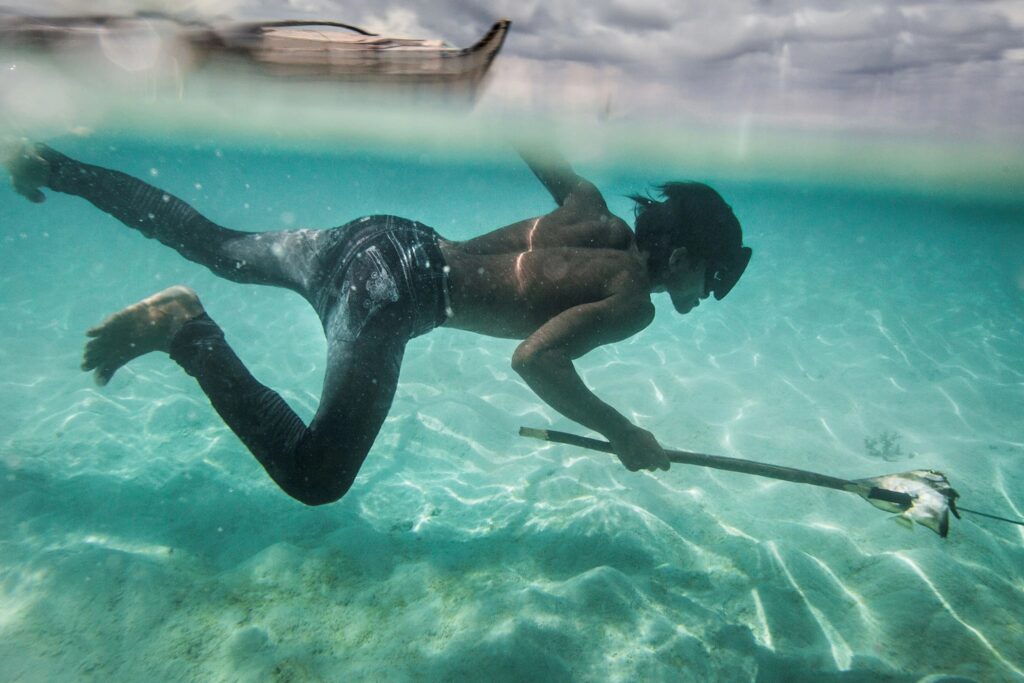Bajau People: Why They Spend Most Of Their Lives Underwater
Bajau People: Why They Spend Most Of Their Lives Underwater And Survive: – Indeed our world is full of amazing people with different and unique traits.
You might be wondering how people are able to spend most of their lives underwater and yet still survive. Well, there are people that live within remote tribes that had been following a strict lifestyle with no changes for thousands of years.
This group is known as the ‘Bajau People’. The Bajau people are estimated to be one million and are usually found across the southern Philippines, Indonesia, and Malaysia. However, they are not citizens of the earlier-mentioned countries.
The Bajau Tribe
The Bajau tribe was discovered during the 18th century when they were living in the areas of Maritime Southeast Asia. They have been nicknamed ‘Sea Nomads’ or ‘Sea Gypsies’ because they prefer to live on houseboats on the sea and never want to settle on dry land.

READ ALSO: Why Is Pregnant Woman Trending?
Throughout the years, the Bajau Tribe has been living only by fishing whilst diving. It has been revealed that during their fishing session they spend 60% of the time underwater.
According to scientists, these people are naturally born to dive and due to this lifestyle, which has been within their roots for centuries, their bodies have adapted to the environment and underwater.
The Bajau people are able to survive underwater due to their ability to hold their breath for a longer time and that is the only way they are able to catch fish which serves as their main food.
Their catch (fish) is also used as their financial source to trade for other goods that they require. They are traced back to 15,000 years ago, living the same sort of lifestyle as they live today and also giving them plenty of time to genetically developed this ability to live underwater.
How Long Can Bajau Hold Their Breath Under Water?
Research has shown that the Bajau can hold their breath for over 5 to 13 minutes, underwater while trained divers can only hold it for 3 or 4. Bajau divers use this diving ability to spend hours each day hunting underwater for fish.

They Pierce Their Eardrums
Some Bajau people pierce their eardrums in order to accommodate their freediving lifestyle.
This helps them to cope with the extreme water pressure whiles they are underneath. When this is not done, they might end up bleeding from the ears and nose and end up feeling dizzy.
However, this eardrum piercing can result in total ear loss during old age.
They Have Long Spleens
The Bajau people have big and long spleens (the spleen is a fist-sized organ in the upper left side of your abdomen, next to your stomach and behind your left ribs).
Spleens are not essential for life, but they contribute to the immune system and function as blood filters by eliminating damaged red blood cells and recycling iron, most importantly, they stores a quantity of blood.
The spleens contract when they are in the water, thereby spreading the blood’s oxygen-rich reserve throughout the body. When swimmers have a larger spleen means more oxygen is available.
They Have Longer Diaphragms
In order for them to survive living underwater, their diaphragms stretch, and the lung wall and abdominal wall also become more flexible which aids them to be able to hold more air underwater.
They Have A Genetic Mutation
The Bajau also has a mutant gene. They have a large amount of the PDE10A gene and the BDKRB2 gene. This makes them unique from other people.
More Blood Flows To Vital Organs Than Their Legs
The mutant gene makes peripheral vasoconstriction a diving response. The Bajau’s distinct genetic makeup may help them effectively tighten non-critical regions of their circulatory system.
This essentially means that more blood is transferred to vital organs like the heart, lungs, and brain, allowing for longer dives, while less blood is used in the sections like the legs.
ncG1vNJzZmivp6x7qLTGqKqsoaBjsLC5jpuYo5mlYr2mu8%2BlnGavmK56tbTEsmSsqJWjsW7Ax56gq2WcnsOmv4yupZ2doqyutbHRaA%3D%3D